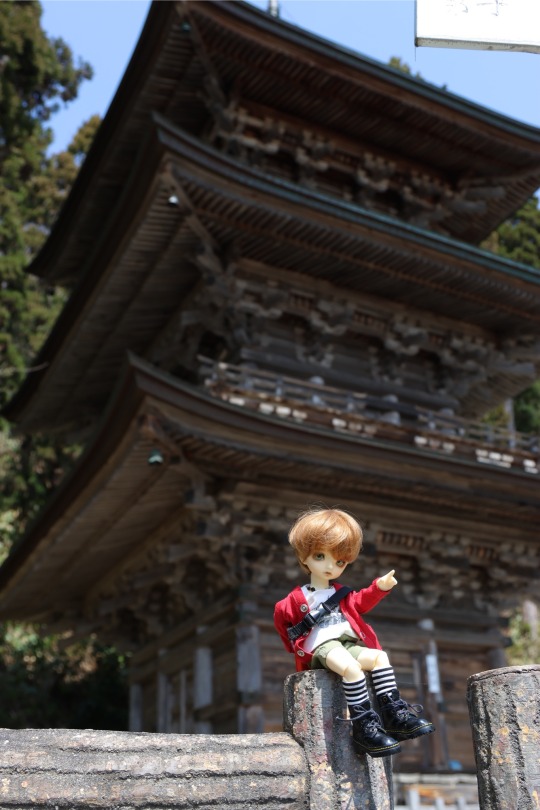#Ryo Yamagata
Text


OLDCODEX Tour 2017 they go Where? - Event Booklet
36 pages, B5
Price: 20€/25 USD
(Shipping price Not included)
Units Available:1
(Send us a message or comment if you’re interested)
#OLDCODEX#Ta_2#Tatsuhisa Suzuki#suzuki tatsuhisa#R.O.N#Yorke#Ryo Yamagata#Taizo Nakamura#Shinji Ōmura#Yohske#Sae#Yoshihiro Nakao#Hiromitsu Kawashima#Masanori Mine#seiyuu#seiyuus#jpop#jrock#japanese music#japanese artist#japanese band#anime#otome#oneesanmarket#all products#manga#kawaii#cute#oneeesanmarket#otaku
4 notes
·
View notes
Text

Picture from Google
Let's talk Shinsengumi haori.
Without a doubt, the Shinsengumi's asagi-color haori, with its white Yamagata sleeve pattern, is one of the most recognizable items of the Edo period, both in media specifically focused on the Shinsengumi and perhaps in general.
So recognizable, in fact, that there was a lot of confusion when the most recent Shinsengumi movie, 2021's Moeyo Ken (Baragaki: Unbroken Samurai in the international release), did not feature it at all, opting instead for an all-black uniform. Not to mention the complete WTF moment that is the red-and-black uniform of 2002's Mibu Gishiden (When the Last Sword Is Drawn in the international release).
But ... what's the historical basis of the asagi-color haori?
Yamamura Tatsuya, researcher and author of many books on both the Shinsengumi specifically and the Bakumatsu period generally, and consultant on movies, documentaries, TV shows, and various other media, says there are several eyewitness accounts in records of the Aizu domain that describe the haori:
In 騒擾日記 (Sojo Nikki): "Fifty-two of them, who called themselves Mibu Roshi, were uniformly dressed, wearing haori of asagi-iro with a white pattern on the cuffs."
This account dates to the Coup of 8.18 (Bunkyu Coup), which took place at the end of September 1863 using the Western calendar.
Two things that are interesting here: (1) the haori was made while they were still the Mibu Roshigumi, as they weren't given the name Shinsengumi until after the Coup, and (2) all of them were uniformly dressed in haori at this time.
In 文久元治亥子太平録 (Bunkyu Genji Boishi Taiheiroku - I think that's how it's read?): "Asa haori with sleeves marked in white with triangular shapes."
This entry helpfully included a drawing of three connected triangles alongside the description, making it clear what these looked like.
(Asa is Japan's linen, but I'm always hesitant to translate it as linen because it's made from domestically-grown plants, typically hemp, ramie, or wisteria, while linen in the general use of the word refers to material made from flax, which wasn't grown in Japan until the Meiji period.)
Additionally, I found other notes from 文久元治亥子太平録, including one from 3.25 Bunkyu 3 (1863) when Aizu retainers went to see the Mibu Roshigumi, who were "wearing clothes of the same color, with a crest" and "having a uniform cloak made", for which 2 ryo was provided by Aizu in addition to the general allowance the Mibu Roshi received from the domain.
In addition to the period eyewitness descriptions from Aizu retainers, the haori are also mentioned in both "Shinsengumi Tenmatsuki", Nagakura Shinpachi's serialized recollections of the Shinsengumi, and in "Shinsengumi Ibun" by Shimozawa Kan, recording the recollection of Yagi Tamesaburo, the son of the Yagi family.
Nagakura: "The haori was only worn for official duties and the asagi sleeves were dyed with dandara, just like the costumes worn by the Ako ronin in the Chushingura."
Yagi: "There was a uniform. It was a light asagi color haori with white mountain patterns dyed into the hem and sleeves, like the costumes of the Ako ronin."
Yamamura, however, believes that Shimozawa Kan's record of Yagi Tamesaburo's recollection may have been embellished by giving not only the information that both the hem and sleeves were dyed with the white pattern, but also offering specific information on the number of patterns on each. In later writings, such as "Shinsengumi Monogatari", in which Shimozawa reuses some of the information from "Shinsengumi Ibun", those details were removed.
---
Summary:
The famous blue Shinsengumi haori undoubtedly existed, even if there are no surviving examples.
It was made from asa, a kind of linen usually made from hemp or ramie, and did have white triangular shapes dyed into the sleeves.
It is first mentioned in Aizu records is in the 3rd month of Bunkyu 3 (late April 1863) and appears to have been worn as a duty uniform by all of the troops while they were still the Mibu Roshigumi.
However, perhaps because unlined asa is not a durable material and a lot of new members were recruited, the uniform became less of a uniform, with only some members wearing it while others did not.
The last mention of the haori was after Ikedaya, meaning that it was only used for a little more than a year.
Shortly after Ikedaya, the Shinsengumi went to a black uniform that included black haori and black hakama, as seen in the most recent Moeyo Ken movie.
This uniform was described by Watanabe Noburo: "The black clothes and hakama of the people following me immediately identified them as Shinsengumi."
I'm speculating, but it was probably cheaper to buy black haori and hakama for a group that was increasing in size, and those materials were likely more durable and more popular than the original haori.
The original haori appears to have been an attempt at creating a uniform that would stand out but was inexpensive, since the asa cloth and the indigo dye used to create the light blue color, as well as sewing the haori without a lining, would have been a fairly low-cost option.

Picture from Google
Let's talk about another feature of the haori that is often seen in Shinsengumi media, such as Hakuoki in the picture above: the extra-long haori himo.
I have yet to find any historical source for its existence and while I'm unwilling to say that I am 100% sure it didn't exist (largely because never say never), I am about 99.9% sure it didn't.
Here's why:
(1) If several Aizu retainers and several additional people felt it helpful to describe the material, color, and dye pattern of the haori in detail, they certainly would have mentioned an extra-long haori himo.
(2) Extra long haori himo do not exist in any period sources: I have looked at literally thousands of photos from the late Edo and early Meiji period, including many many portraits, and there's just no such thing. The same holds true for woodblock prints, including prints of actors playing characters in the Chushingura. So again, while I can't say I've looked at all the things, I can say I've looked at a lot.
There is a mention of someone wearing extra long haori himo in the book 明治・父・アメリカ (Meiji, Father, America) by Hoshi Shinichi.
Hoshi writes about the experiences of his father, Hoshi Hajime: "At that time [ 1888-1919] only officials wore Western-style clothing and most people wore Japanese clothing. ... I came up with an idea, to make a very long haori cord, even if it's made from cheap thread. It was unnecessarily long. It was strange, but felt stylish. When I wore it to school, it became a hot topic and some of my classmates imitated it. Eventually, they began to tie the ends and twist them to be hung around the neck. ... It became a bit of a trend."
I don't know when those extra long haori himo crept into Shinsengumi films, but they are already shown in the 1935 movie エノケンの近藤勇 (Enoken no Kondo Isami), which is on YouTube.
That was the earliest movie for which I was able to find video or images, but there are several older ones I'm aware of: a 1934 silent film, 新撰組悲歌 (Shinsengumi hika) and a 1914 silent film, Kondo Isami. I know there are no copies of the 1914 film, but there may possibly be some of Shinsengumi hika that I haven't found yet. So it's still possible that the fashion of long haori himo for Shinsengumi movie costumes might predate the 1935 film.
As always, if you have more info, please add in comments or reblog!
#shinsengumi#shinsengumi haori#shinsengumi uniform#asagi haori#dandara haori#history notes#historical notes#history research#historical research#history reference#historical reference
46 notes
·
View notes
Text
Adoption request for Mahoroba Kanata into the Hakumyu fan community
“Mahoroba Kanata” is a original work of the screen writer Nishida Daisuke, it follows the story of the Choshu clan centered by Takasugi Shinsaku, set in the Bakumatsu period. “Mahoroba” also called the ‘land of blessings’ in the Japanese folklore is something Takasugi dreams of to obtain.
Why do I want adopt it into Hakumyu (Hakuouki)?
The reason are simple and overflowing:
time period and story:
1) both are settled in the Bakumatsu period in a time frame between 1850ties and 1860ties
2) both are concentrate on a contrary opinions, none of them follows the concept of “We are right, you are wrong”
3) there is lot of suffering (maybe a bit more love in Mahoroba)
4) both like to joke and have unique, relatable characters
5) all characters are as well based on real history figures
cast and stuff
1) well as said before: Nishida Daisuke as director (active in Hakumyu since 2018)
2) Tomita Maho: - fourth Chizuru in Kazama Hen
- playing the role of Shinsaku’s faithfull and tomboiish wife O-Masa
3) Tanoue Marina: - fifth Chizuru in Toudou Hen
- playing the younger sister of Yoshida Shouin, named Fumi
4) Motonishi Sakiho: - ninth Chizuru in Shitan Kazama Hen
- playing the lover of Takasugi Shinsaku, called Ouno
5) Matsuda Ryo: - first Saito Hajime active until Kazama Hen
- playing the role of Katsuragi Goro
Shinsengumi
yes, they do appear and they play a minor role
publication and fandom
since it’s on one side an original work and on the other side not part of a series, there’s is no ‘active’ fandom, I would claim (at least outside of Japan) AND they don’t plan on ever publishing a DVD/BD, but since it’s such a high quality play, I find it sad to let it disappear into history’s shadow.
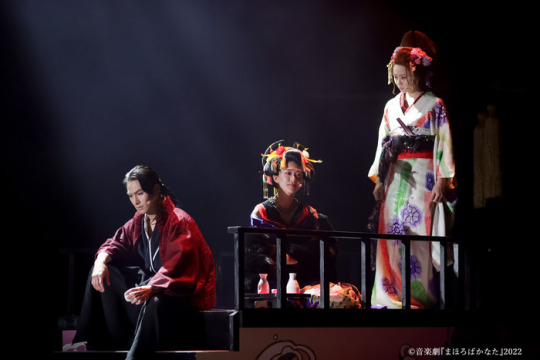
Why is Mahoroba Kanata attractive on it’s own?
It’s easy to be answered, because it has it all: great music, great story, overwhelming feelings, great actors and great acting, fun bits and good bits and and tearing apart sad parts, great visuals, a beautiful stage - did I forgot something?
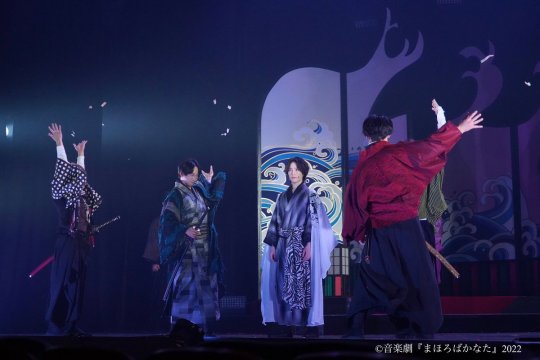

Whole cast list:
高杉晋作 Takasugi Shinsaku (1839-1867) samurai, who fought against the Bakufu
阪本奨悟 Sakamoto Shougo (https://twitter.com/Sakamoto_Shogo)
山縣狂介 Yamagata Aritomo (1838-1922)
糸川耀士郎 Itokawa Youjirou (https://twitter.com/yohhg)
大村蔵六 Oomura Zouroku (1825-1869)
和合真一 Wago Shin’ichi (https://twitter.com/wagoshin1)
伊藤春輔 Itou Hirobumi (1841-1909) politican in the later Meiji goverment
廣野凌大 Hirono Ryouta (https://twitter.com/hironobimistaff)
勝海舟 Katsu Kaishuu (1823-1899) former samurai, politican and bakufu supporter
根本正勝 Nemoto Masakazu (https://twitter.com/oni_fukucyo)
お雅 O-Masa (1845-1922), wife of Shinsaku, real name Masako
富田麻帆 Tomita Maho (https://twitter.com/maho_tomita6261)
文 Yoshida Fumi, later Katori Miwako (1843-1921), sister of Yoshida Shouin
田上真里奈 Tanoue Marina (https://twitter.com/tanouemarina)
おうの Ouno, Shinsaku’s lover (1843-1909), former Geiko, later nun
本西彩希帆 Motonishi Sakiho (https://twitter.com/sakiho_46)
すみ子 (Itou) Sumiko, Hirobumi’s ex wife
平井琴望 Hirai Kotomi (https://www.instagram.com/kotomi915/)
幾松 Ikumatsu (1843-1886) later Kido Matsuko (Katsuragis wife)
律 Ritsu (https://twitter.com/LizLiz_ritsu)
吉田松陰 (1830-1859), proponent of the Sonnou Jooi, got arrested and later executed
中村亀鶴 Nakamura Kikaku (2nd gen) (https://twitter.com/KIKAKU0618)
桂小五郎 Katsuragi Goro (1833-1877) later Kido Takayoshi, former samurai, Meiji goverment politican
松田凌 Matsuda Ryo (https://www.instagram.com/matsudaryo_9)
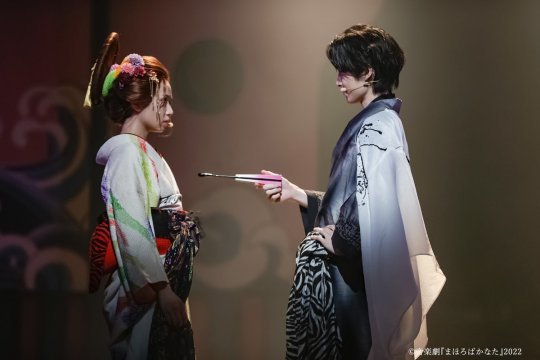



(pictures taken from the official twitter page : https://twitter.com/mahorobakanata
Still not convinced? Then hear for yourself (and thanks for sticking until the end)
youtube
youtube
Will you accept my request, Hakumyu-Community?
Thanks for listening to me (I decided to translate it within this year, but please be patient with me LIVE 3 is still being nosy on my desk (;^_^A)
#hakuouki#hakuouki musical#hakumyu#hakuoki#tomita maho#tanoue marina#motonishi sakiho#itokawa youjirou#sakamoto shougo#ritsu#hirai kotomi#Mahoroba Kanata#wago shinichi#nakamura kikaku#hirono ryouta#matsuda ryo#nemoto masakazu#history based characters#it's too good to be forgotten
12 notes
·
View notes
Photo



HAPPY 10th OLDCODEX ANNIVERSARY !!!
Thank you for all of the great music you make !
#OLDCODEX#OCD#Ta_2#suzuki tatsuhisa#tatsuhisa suzuki#YORKE#painter yorke#Shinji Ohmura#Ryo Yamagata#Taizo Nakamura#Ocd Ta_2#ocd yorke#Ocd Shinji#Ocd Taizo#Ocd Ryo#I LOVE THEM#Graphics#my edits
40 notes
·
View notes
Text

10 YEARS OF OLDCODEX
happy 10 years of oldcodex! thank you for the 10 years of inspiring music ♡
#oldcodex#suzuki tatsuhisa#yorke#ta 2#shinji#painter yorke#taizo nakamura#ryo yamagata#anime#anime music#seiyuu
1 note
·
View note
Photo

Oldcodex is going to Shanghai! From left to right: Ryo(Dr.), Ta_2(Vo), YORKE(Pt), SCHON(Gt), Taizo(Ba)
#oldcodex#Suzuki Tatsuhisa#seiyu#seiyuu#Yorke#Tatsuhisa Suzuki#Painter Yorke#Taizo Nakamura#Ryo Yamagata
72 notes
·
View notes
Photo
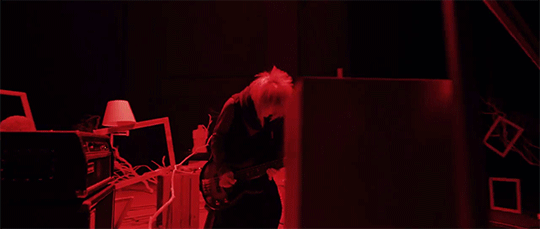




#OLDCODEX#Where’d they go?#Tatsuhisa Suzuki#YORKE#Suzuki Tatsuhisa#painter yorke#Ryo Yamagata#Nakamura Taizo#Ōmura Shinji#oldcrbm#rubyblackmoon
29 notes
·
View notes
Video
youtube
#OLDCODEX#they go where?#where'd they go?#suzuki tatsuhisa#painter Yorke#Ta_2#mynameisyorke#Tatsun#Yorke#tatsuhisa suzuki#ryo yamagata#nakamura taizo#omura shinji
14 notes
·
View notes
Text
Sunplus Summer Bazaar stage report
Yesterday I went to the Sunplus Summer Bazaar and thought I’d write a stage report for it. It was absolutely amazing and I think it’s one of the best plays that I’ve ever seen.
Sunplus is an acting agency that includes the following actors: Sana Hiroki, Isawa Takuma, Taguchi Jun, Aoki Jin, Saeki Ryo, Tanimizu Riki, Hirano Koushou, Maruyama Shun, Mizuta Tatsuki, Mitsui Ryo and Yamagata Takumi
They have been in shows like Prince of Tennis, Patalliro and Mankai A3
It was surprisingly dark but despite only being about 1hr 40 no story line or main character felt rushed or underdeveloped. All the actors, that I knew at least, acted I different kind of character to the characters I’d seen them act before and it was a good look at how talented each actor is.
Spoilers under the cut - There will be a DVD of the show
The basic storyline is that there are boys living together in a catholic school dorm near Tokyo. When the aircon breaks in their rooms, they are all pushed into the communal area and spend time together, then they discover dark things about the others and all try to help each other.
Underneath is a summary of each character and their storyline:
Isawa Takuma ad Akiyoshi Fuuta
Main character, 2nd year student. His father owns a hospital and he was going to inherit it until his mother died when he was 13, then he decided to become a musician instead. This is later revealed to be because his mother committed suicide in front of him and his brother and ever since then he fainted at the sight of blood. He hid the sight from his brother. After her spirit is summoned into his little brother and she apologises he finally gives up music, that he was never that interested in and goes back to medicine. There was a ongoing theme of the phone ringing and first time no one spoke, second time there was a woman crying, and third time it was revealed to be Takuma’s mother calling from beyond the grave to apologise to him. There was a joke that he kept asking the others to strip which was quite funny. Very honest, kind but hiding his issues.
Sana Hiroki as Hori Takeru
2nd year student. He was rumoured to have a girlfriend but that was just a rumour. He was making a broach for a woman he’d been in love with ever since primary school. He seems slightly cold at first but begins to open up and trust the others until he cousin calls and says that the woman he was in love with got married. His cousin, unbeknownst to him, reveals to the other boys that he is in love with his 60 year old primary school teacher. He then punches another boy who try to ask him about it but later apologises and helps the other boys. He and his cousin are both obsessed with a dolphin toy that has sunflowers on it
Saeki Ryo as Wakisaka Junosuke
2nd year student. He was very funny. Typical megane character. Obsessed with studying. There was a rumour that his sister had died and the other boys were dancing around the issue until after a while he finally managed to convince them that she wasn’t dead. His storyline was built up to be sad but this storyline ended pretty quickly and really worked because otherwise it wouldn’t have felt as complete of a story.
Tanimizu Riki as Osanai Masato
2nd year student. He is kinda the mum friend and would look after the others, clean and cook. This is revealed to be because his brother, who he lived with before he moved into the dorms, treated him like dirt and made him do all of that for him. He would often beat him, even when he came to the dorms as his brother would visit him in his room, at first he lied to cover this up but eventually confronted his brother with everyone's help. Kind and motherly
Yamagata Takumi as Miyano Kouhei
2nd year student. He was kinda annoying. Obsessed with spirits and was quite loud and pushy. Found out that his father wasn’t actually his father and his mother cheated on him. He held a seance to try and find his real father but the father raised him was summoned into Akiyoshi Kouta, Fuuta’s younger brother, and the others talked to him about Miyano. Always energetic and upbeat but there was a sadness hiding in his eyes
Taguchi Jun as Akiyoshi Kouta
A middle school student and Fuuta’s little brother. Annoyed at his brother for deciding to go into music instead which I found a bit silly because his brother did shield their mother’s suicide from him. He didn’t do very much and wasn’t on stage often. Seemed quite rude and harsh to his brother but sweet to his friend from school. During the seance he was inhabited by Miyano’s father and for a moment at the end his mother’s spirit came into him and apologised to Fuuta, which finally made him confront his mother’s death.
Aoki Jin as Osanai Wataru
Riki's older brother and a salary man. Seems kind and friendly at first but it's later revealed that he tells his brother he is nothing and beats him to 'try and turn him into a useful and good person'. He is extremely evil and cruel. He tries to attack the others when they corner him and film him, throttling Kouta to make them delete the video.
Maryuma Shun as Tachibana Rikuo
Sports teacher. Probably my least favourite character. Seemed well meaning but overbearing and teased the boys a bit much and didn’t seem to add anything to the play and was just a bit annoying.
Hirano Koushou as Natsui Nozomi
Vice principal. He was kinda weird but fun. All the students kinda made fun of him but he clearly cared for them a lot. Was built up to be strong but he went down in one punch from Takeru. He was training Masato to try help him get a date which Masato originally used as an excuse for where he got all his bruises from but Natsui reveals that is not where they came from.
Mizuta Tatsuki as Sakaki Atsushi
The chairman's grandson. He seemed like an exposition character. Came to introduce other characters. Classmates with Jun. Kind and helpful and joined the others in the end to help with their problems even though he knew nothing about it
Mitsui Ryo as Kishi Naojirou
Takeru’s cousin. He was super weird. Had fluorescent clothes with pink hair and his clothes didn’t match at all. At first he had a red flowy top with red skirt and pink tights then a pink top, yellow scarf, red headband, red visor, pink waistband short skirt thing and green, black, grey and yellow leggings. His personality was pretty much exactly what you’d expect from that description. He was super weird but seemed kind and joined the others in the end to help with their problems even though he knew nothing about it. I kinda loved him.
It was an amazing show and I really recommend getting the DVD if you love even one of these actors.
#Sunplus#summer bazaar#sana hiroki#isawa takuma#taguchi jun#aoki jin#saeki ryo#tanimizu riki#hirano koushou#maruyama shun#mizuta tatsuki#mitsui ryo#yamagata takumi#stage report#dark themes
2 notes
·
View notes
Photo



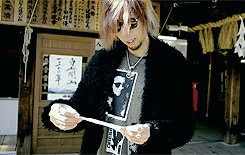


OLDCODEX visiting a temple during their Fixed Engine tour
#OLDCODEX#Fixed Engine#Suzuki Tatsuhisa#Tatsuhisa Suzuki#YORKE.#Ta_2#painter yorke.#Yamagata Ryo#mgif#mine
162 notes
·
View notes
Text
Onsen Surname Explanations (+ Some First Names)
This explanation is building upon my original post on the now-deleted Tumblr lolyeahshinichi, as well as what people have discovered over the years.
Note some are singular hot springs and some are named after groups of hot springs/hot spring towns.
LOVE!
Defence Club
Hakone:
Hakone Yumoto and Hakone Gora both refer to onsen in...well, Hakone, Kanagawa. There are also train stations named after them. (There also appears to be a place in Nikko which has "Hakone Yumoto" onsen as well, but that would lose the connection with Gora.)
black eggs (kurotama, short for kuro tamago) cooked in hot spring water are a Hakone specialty, specifically at Owakudani.
for some bonus disc content, the Boueibu VAs travelled here + there was a collab with the place.
Yufuin:
In Oita Prefecture.
The namesake onsen is geographically close to Beppu Onsen, although nothing ever seemed to come of this.
Kinugawa:
In Nikko, Tochigi Prefecture.
The name roughly means "angry demon river", yet nothing ever seems to have come of this.
Boueibu did a collab with the place.
Naruko:
In Osaki, Miyagi Prefecture.
Naruko Onsen is known for its ability to cure ailments.
The kanji for Io's name means "sulfur", which Naruko Onsen has (his name is written いお in hiragana, but the characters for "sulfur" are 硫黄 (いおう)).
Zaou:
In Yamagata Prefecture.
The region this onsen is in is known for snow and cherries, specifically Sato Nishiki, which are Ryuu's favourite.
Ryuu's name derives from how rime (a type of ice) makes trees stand up.
Student Council:
Kusatsu Onsen, Arima Onsen and Gero Onsen are known as the 3 best/most famous/major hot springs in Japan (depending on translation).
Kusatsu:
In Gunma Prefecture.
Arima:
In Hyogo Prefecture.
Due to the minerals present, it has "golden baths" (actually a bright mustard/brown colour) and "silver baths" (actually transparent).
Gero:
In Gifu Prefecture.
Has "bijin no yu" ("beauty-enhancing baths"), hence Akoya's obsession with beauty. Bijin is only used to describe beautiful women (vs. bishonen or biseinen), which might explain why Akoya is so androgynous.
Other
Tawarayama:
In Yamaguchi.
Known for healing arthritis and joint pain.
Kinosaki:
In Toyooka Prefecture.
Kou possibly derives his name from the Kou no yu.
Tazawa:
In Aoki, Nagano Prefecture.
Tazawa Masuya is the name of a ryokan.
Beppu:
In Oita Prefecture.
Has various "hells".
Happy Kiss
Defence Club
Shuzenji:
Located in the Tagata district of the Izu Peninsula in Shizuoka.
One of the oldest hot springs.
The resort was loved by Natsume Soseki.
Kirishima:
Located on the hillside of Mt. Kirishima in Kagoshima.
Known for its "Sulfur Valley".
It appears Ryoma got his name because Ryoma Sakamoto stayed in Kirishima with his wife, Ryo, for their honeymoon (apparently the first honeymoon in Japan).
Wakura:
Located on the Nanao Bay in the Noto Peninsula in Nanao, Ishikawa prefecture.
One of the oldest hot springs in the region, with a history dating back 1200 years.
Manza:
In Gunma Prefecture.
Snowy region.
1800 metres above sea level.
Dougo:
In Matsuyama City, Ehime Prefecture.
Said to be the oldest hot spring in Japan, with a history going back 3000 years.
Did a collaboration with Osamu Tezuka's manga Phoenix.
A specialty of the area is Ichiroku tart (a roll cake). Dougo's first name is Ichiro (one-six) to match this and this "Ichiro" sounds like a common name in Japan ("first son" (一郎), although that has an elongated sound on the end). There is also a 6 on Dougo's badge (stylised to look like a cake swirl) and his shirt from when he was younger to play upon this.
Student Council
Ibusuki:
In Kagoshima Prefecture.
Known for sand baths as well as the more traditional hot springs.
Unazuki:
Located in Kurobe, Toyama Prefecture. Found at the entrance of the Kurobe Gorge.
Shirahone:
In Matsumoto City, Nagano Prefecture.
Has milk-white water, due to high magnesium and calcium content. (Shirahone = white bone.)
Other
Karurusu:
In Norioboetsu.
Named after Carlsbad in Czechoslovakia.
Furanui:
Located in Kamifurano, Hokkaido.
Appears to properly be called "Frontier Furanui Onsen".
#boueibu#boueibu hk#Binan Koukou Chikyuu Boueibu LOVE!#Binan Koukou Chikyuu Boueibu LOVE! LOVE!#Binan Koukou Chikyuu Boueibu Happy Kiss!#(This post took me about 2 hours to compile.)
26 notes
·
View notes
Text
Making Sakamoto a character of sense
Hakuouki - a game about the Shinsengumi - but why is there a Sakamoto Ryoma?
Let me create a sequal idea to make him more sense:
(character designs are based on Mahoroba Kanata and Jinbaku)
story idea: the story envolves around Tosa, Satsuma and Choshu characters and their lives (content with the ochimizu/ demons might be added which allows different endings)
game play: otome with several heroines:
O-Ryo going down Sakamotos route of course
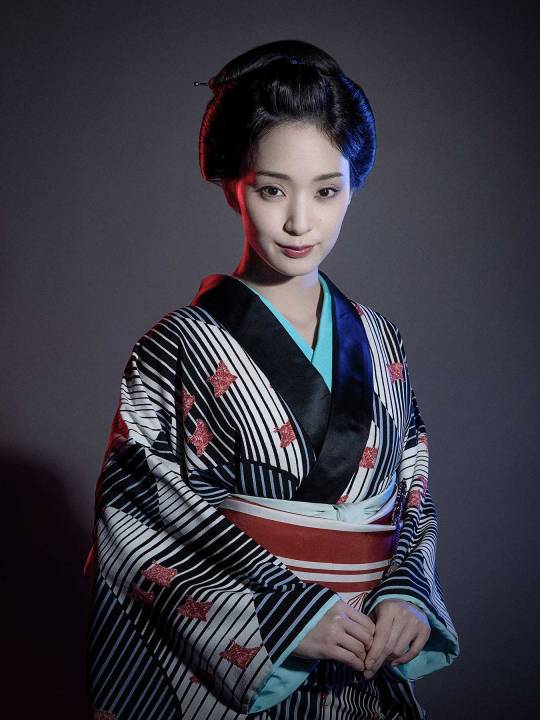
O-Masa & O-Uno going down Takasugi Shinsaku, the historic death of him is the tragic ending

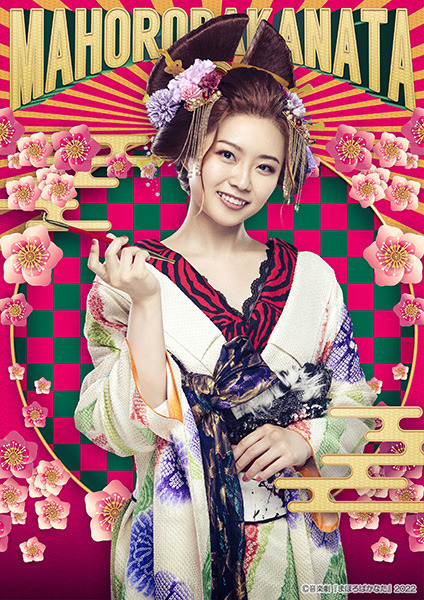
Ikumatsu following Katsura Kogoro as a former geisha to his wife
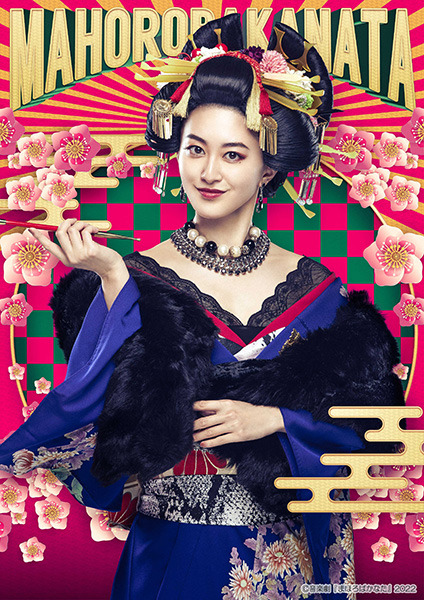
Sumiko, the tragic story about Itō Chunsuke former wife (and maybe a secret happy ending?)

The "datable" guys:
Sakamoto Ryoma: a man of great dreams, a pacifistic mind set, who hopes to change Japan, without it becoming property of foreign countries
Takasugi Shinsaku: a smart guy who is often bored and tries to expand his horizon as far as even traveling to Shanghai, who suffers Tuberculosis.
Katsura Kogoro: a patriot that cares too much about his han and it's well-being. He gets injured in the Hamaguri Jiken and starts to rethink his life.
Itō Chunsuke: a carefree man, that realises he loses the most precious thing, can he stop it from happening?
Maybe as secret routes:
Fumi and Yamagata Kousuke sad love story??
Nakaoka Shintaro and a secret lover?
Or Kimotsuki Kanetake's story told from Komatsu Chika or his concubine Mikikoto
I mean Hakuouki made a similar idea based game named Hakuouki Uragata, which was less popular. Maybe it would help if they would completely cut off from Hakuouki so it can stand and shine alone.
#I just had thoughts#hakumyu#hakuouki#hakuouki musical#Mahoroba Kanata#(did I make this because I love Mahoroba Kanata. yes i did i admit)#Sakamoto Ryoma#I'm sorry for being lazy to link the pictures (you can find most of it on the official MK page as for the O-Ryo picture its from Jinbaku)#aka Bakumatsu without honour#or#Hitomi naki Bakumatsu
3 notes
·
View notes
Text
So the Third Zenkaiger Mini Album...
As with all of the others, it goes ZENRYOKU ZENKAI the whole way through, with LOTS of bangers!
I do have some thoughts on some of them tho.
Firstly, "NEVER GIVE UP! Super ZenkaiOh Juran". It is a pretty good song, and Yukio Yamagata does give a good performance like he's done for previous Sentai songs. But I feel like he puts a bit too much into the "growl" of his voice as he sings. I mean, I like when you can just feel a bit of a "growl" from a song's vocalist for a small portion (think, say, some of the parts of Ado's "Usseewa").
But this growl is there for like. THE WHOLE SONG. And it's neato, but it does give it a weird feeling IMO.
Next, "Nitoryu! Super TwokaiOh". A pretty bangin' song the whole way through, and it gives off the pirate vibes that Twokaizer's pretty much alwasy been aiming for, tho in a slightly different way. Like, Kaizoku no Uta was the classic sea shanty, base TwokaiOh's theme was the high-energy battle/duel theme. And this? This feels like the perfect theme for a big pirate adventure!
There were some parts did take a little bit of getting used to tbh, but otherwise pretty much the entire thing was a good jam from start to finish.
Next up, "Chō Zenkai Gattai! ZenKaijuOh". First thing to note: IT'S FRIGGIN MASAAKI ENDOH. THIS IS GUARANTEED THE GOOD SHIT!
In all seriousness, this song is just great all over. Has the perfect energy for ZenKaijuOh, being a giant dinosaur mecha, and not one that can change into a humanoid form. Just one big giant robo t-rex with rocket launchers, a DRILL TAIL, LASER CANNONS, and the like. The arrangement just gives off the perfect vibes for the big lad, and Masaaki Endoh was the best choice to do the vocals. I could easily tell from thinking back on other songs he did vocals for (YOU WILL CHANT HIS NAME) that it would turn out great, and lo and behold, it did.
Last but certainly not least, "STACY THOUGHT". Stacy's theme. His insert, that his actor, Ryo Sekoguchi, sang.
Look, I know that I just basically restated the obvious there, but it's just that I... I don't know how to put my feelings for this song into words. It's just.
That.
AMAZING!
Seriously, the fact that it switches between a slower pace, LITERAL RAP, and a decently fast but still sorta moderate pace, all at a good level to where it flows so easily and so well just is amazing! It somehow gives off the perfect energy for Stacy despite the fact that you wouldn't think it at first.
And plus, Ryo Sekoguchi has had experience doing vocals stuff before; turns out he's the stage actor for Ramuda Amemura in the stage plays for the Hypnosis Mic -Division Rap Battle- franchise, so the rapping portion most likely was pretty easy for him to handle!
Hell, now that I think about it, it's funny. This song has energy that would also work pretty well for Kaito I feel. And Ryo originally auditioned for the role of Kaito, then eventually was cast as Stacy.
Just feels like it comes full circle, in a way (especially thanks to the body swap episode).
But yeah, these songs are pretty much all bangers, can't wait till we get the fourth mini album. Cause I am intrigued at what Secchan and Yacchan's inserts will be like, and really excited for the Zenryoku ZenkaiOh theme!
#omni's rambling again#sentai ramblings#super sentai#kikai sentai zenkaiger#legit these songs are actually all bangers#ZENRYOKU ZENKAI DA!
4 notes
·
View notes
Text
Pro Wrestling WAVE Results for May 21, 2017
Pro Wrestling WAVE Results for May 21, 2017
Pro Wrestling WAVE “SAPPORO WAVE~NA・MA・RA 5” 5/21/17 [Sun] 12:30 @ the Sapporo Susukino Mars Gym 278 spectators (1) Hikaru Shida vs Mika Iida ♦Winner: Shida (9:36) with the Tamashi no Three Count (2) Masaki Ikeda vs Keisuke Goto ♦Winner: Ikeda (6:59) with a Camel Clutch (3) CATCH THE WAVE League Match: SAKI (Other Than) vs Rin Kadokura (Other Than) ♦Winner: DRAW (15:00) time expired ~SAKI [2…
View On WordPress
#asuka#hikaru shida#hiroe nagahama#joshi puroresu#keisuke goto#mika iida#misaki ohata#Mochi Miyagi#moeka haruhi#natsu sumire#pro wrestling wave#rin kadokura#rina yamashita#ryo mizunami#SAKI#sareee#yuki miyazaki#yumi ohka#yuu yamagata
4 notes
·
View notes
Text
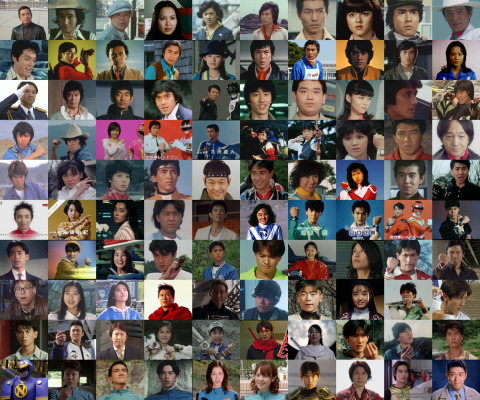
Status Post #8045: Super Sentai 1-100
Row 1 - Goranger [Akaranger (Red): Tsuyoshi Kaijo (Naoya Makoto), Aoranger (Blue): Akira Shimnei (Hiroshi Miyauchi), Kiranger (Yellow): Daita Oiwa (Baku Hatakeyama), Momoranger (Pink): Peggy Matsuyama (Lisa Komaki) and Midoranger (Green): Kenji Asuka (Yukio Itou)] and JAKQ [Spade Ace (Red): Goro Sakurai (Yoshitaka Tanba), Dia Jack (Blue): Ryu Higashi (Tairayama Itou), Heart Queen (Pink): Karen Mizuki (Mitchi Love), Clover King (Green): Bunta Daichi (Yuusuke Kazato) and Big One (White): Sokichi Banba (Hiroshi Miyauchi)]
Row 2 - Battle Fever J [Battle Japan (Red): Masao Den (Hironori Tanioka), Battle France (Blue): Kyousuke Shida (Yuuhei Kurachi), Battle Cossack (Orange): Makoto Jin (Naoya Ban), Battle Kenya (Black): Shirou Akebono (Kenji Ohba) and Miss America (Pink): Maria Nagisa (Naomi Hagi)] and Denjiman [Denji Red: Ippei Akagi (Shinichi Yuuki), Denji Blue: Daigoro Oume (Kenji Ohba), Denji Yellow: Jun Kiyama (Eiichi Tsuyama), Denji Green: Tatsuya Midorikawa (Naoya Uchida) and Denji Pink: Akira Momoi (Akira Koizumi)]
Row 3 - Sun Vulcan [Vul Eagle (Red): Takayuki Hiba (Takayuki Godai), Vul Shark (Blue): Kin'ya Samejima (Kin'ya Sugi) and Vul Panther (Yellow): Asao Hyou (Asao Kobayashi)], Goggle-V [Goggle Red: Kenichi Akama (Ryouji Akagi), Goggle Black: Kanpei Kuroda (Jyunichi Haruta), Goggle Blue: Saburo Aoyama (Shigeki Ishii), Goggle Yellow: Futoshi Kijima (Sanpei Godai) and Goggle Pink: Miki Momozono (Megumi Ogawa)] and Dynaman (Red and Black) [Dyna Red: Hokuto Dan (Satoshi Okita) and Dyna Black: Ryuu Hoshikawa (Jyunchi Haruta)]
Row 4 - Dynaman (Blue, Yellow and Pink) [Dyna Blue: Yousuke Shima (Kouji Unogi), Dyna Yellow: Kousaku Nangou (Yuu Tokita) and Dyna Pink: Rei Tachibana (Sayoko Hagiwara)], Bioman [Red One: Shirou Gou (Ryosuke Sakamoto), Green Two: Shingo Takasugi (Naoto Ota), Blue Three: Ryuuta Nanbara (Akita Osuga), Yellow Four: Jun Yabuki (Sumiko Tanaka) and Pink Five: Hikaru Katsuragi (Michiko Makino)] and Changeman (Red and Black) [Change Dragon (Red): Hiryu Tsurugi (Haruki Hamada) and Change Griffin (Black): Shou Hayate (Kazuoki Takahashi)]
Row 5 - Changeman (Blue, White and Pink) [Change Pegasus (Blue): Yuma Ozora (Shiro Izumi), Change Mermaid (White): Sayaka Nagisa (Hiroko Nishimoto) and Change Phoenix (Pink): Mai Tsubasa (Mai Ooishi)], Flashman [Red Flash: Jin (Touta Tarumi), Green Flash: Dai (Kihachiro Uemura), Blue Flash: Bun (Yasuhiro Ishiwata), Yellow Flash: Sara Tokimura (Youko Nakamura) and Pink Flash: Lou (Mayumi Yoshida)] and Maskman (Red and Black) [Red Mask: Takeru (Ryousuke Kaizu) and Black Mask: Kenta (Koichi Kusakari)]
Row 6 - Maskman (Blue, Yellow and Pink) [Blue Mask: Akira (Issei Hirota), Yellow Mask: Haruka (Yuki Nagata) and Pink Mask: Momoko (Kanako Maeda)], Liveman [Red Falcon: Yuusuke Amamiya (Daisuke Shima), Yellow Lion: Joh Ohara (Kazuhiko Nishimura), Blue Dolphin: Megumi Misaki (Megumi Mori), Black Bison: Tetsuya Yano (Seirou Yamaguchi) and Green Sai: Jun'ichi Aikawa (Jin Kawamoto)] and Turboranger (Red and Black) [Red Turbo: Riki Honoo (Kenta Satou) and Black Turbo: Daichi Yamagata (Fumiaki Ganaha)]
Row 7 - Turboranger (Blue, Yellow and Pink) [Blue Turbo: Youhei Hama (Keiya Asakura), Yellow Turbo: Shunsuke Hino (Junichiro Katagiri) and Pink Turbo: Haruna Morikawa (Yoshiko Iwaya)], Fiveman [Five Red: Gaku Hoshikawa (Toshiya Fuji), Five Blue: Ken Hoshikawa (Kei Sindachiya), Five Black: Fumiya Hoshikawa (Ryohei Kobayashi), Five Pink: Kazumi Hoshikawa (Kazuko Miyata) and Five Yellow: Remi Hoshikawa (Ryo Narushima)] and Jetman (Red and Black) [Red Hawk: Ryu Tendo (Kotaro Tanaka) and Black Condor: Gai Yuki (Toshihide Wakamatsu)]
Row 8 - Jetman (Yellow, White and Blue) [Yellow Owl: Raita Ooishi (Tomihisa Naruse), White Swan: Kaori Rokumeikan (Rika Kishida) and Blue Swallow: Ako Hayasaka (Sayuri Uchida)], Zyuranger [Tyranno Ranger (Red): Geki (Yuta Mochizuki), Mammoth Ranger (Black): Goushi (Seiju Umon), Tricera Ranger (Blue): Dan (Hideki Fujiwara), Tiger Ranger (Yellow): Boi (Takumi Hashimoto), Ptera Ranger (Pink): Mei (Reiko Chiba) and Dragon Ranger (Green): Burai (Shiro Izumi)] and Dairanger (Red) [Ryuu Ranger (Red): Ryo (Keiichi Wada)]
Row 9 - Dairanger (Green, Blue, Yellow, Pink and White) [Shishi Ranger (Green): Daigo (Tatsuya Nomi), Tenma Ranger (Blue): Shoji (Ei Hamura), Kirin Ranger (Yellow): Kazu (Keisuke Tsuchiya), Houou Ranger (Pink): Lin (Natsuki Takahashi) and Kiba Ranger (White): Kou (Hisashi Sakai)] and Kakuranger [Ninja Red: Sasuke (Teruaki Ogawa), Ninja White: Tsuruhime (Satomi Hirose), Ninja Blue: Saizou (Hiroshi Tsuchida), Ninja Yellow: Seikai (Shu Kawai) and Ninja Black: Jiraiya (Kane Kosugi)]
Row 10 - Kakuranger (Navy) [Extra Hero (Navy): Ninjaman (Hideaki Kusaka, voiced by Kazuki Yao)], Ohranger [Oh Red: Goro Hoshino (Masaru Shishido), Oh Green: Shouhei Yokkaichi (Kunio Masaoka), Oh Blue: Yuji Mita (Masashi Goda), Oh Yellow: Juri Nijou (Ayumi Aso), Oh Pink: Momo Maruo (Tamao Sato) and King Ranger (Black): Riki (Shoji Yamaguchi)] and Carranger (Red, Blue and Green) [Red Racer: Kyosuke Jinnai (Yuji Kishi), Blue Racer: Naoki Domon (Yoshihiro Masujima) and Green Racer: Minoru Uesugi (Yoshihiro Fukuda)]
4 notes
·
View notes
